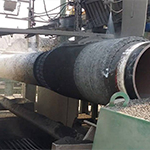- Industrial zone, South of Anping Town, Hengshui, Hebei, China.
- sales@hfpetromesh.com
- +86-18931809706
 Afrikaans
Afrikaans  Albanian
Albanian  Amharic
Amharic  Arabic
Arabic  Armenian
Armenian  Azerbaijani
Azerbaijani  Basque
Basque  Belarusian
Belarusian  Bengali
Bengali  Bosnian
Bosnian  Bulgarian
Bulgarian  Catalan
Catalan  Cebuano
Cebuano  Corsican
Corsican  Croatian
Croatian  Czech
Czech  Danish
Danish  Dutch
Dutch  English
English  Esperanto
Esperanto  Estonian
Estonian  Finnish
Finnish  French
French  Frisian
Frisian  Galician
Galician  Georgian
Georgian  German
German  Greek
Greek  Gujarati
Gujarati  Haitian Creole
Haitian Creole  hausa
hausa  hawaiian
hawaiian  Hebrew
Hebrew  Hindi
Hindi  Miao
Miao  Hungarian
Hungarian  Icelandic
Icelandic  igbo
igbo  Indonesian
Indonesian  irish
irish  Italian
Italian  Japanese
Japanese  Javanese
Javanese  Kannada
Kannada  kazakh
kazakh  Khmer
Khmer  Rwandese
Rwandese  Korean
Korean  Kurdish
Kurdish  Kyrgyz
Kyrgyz  Lao
Lao  Latin
Latin  Latvian
Latvian  Lithuanian
Lithuanian  Luxembourgish
Luxembourgish  Macedonian
Macedonian  Malgashi
Malgashi  Malay
Malay  Malayalam
Malayalam  Maltese
Maltese  Maori
Maori  Marathi
Marathi  Mongolian
Mongolian  Myanmar
Myanmar  Nepali
Nepali  Norwegian
Norwegian  Norwegian
Norwegian  Occitan
Occitan  Pashto
Pashto  Persian
Persian  Polish
Polish  Portuguese
Portuguese  Punjabi
Punjabi  Romanian
Romanian  Russian
Russian  Samoan
Samoan  Scottish Gaelic
Scottish Gaelic  Serbian
Serbian  Sesotho
Sesotho  Shona
Shona  Sindhi
Sindhi  Sinhala
Sinhala  Slovak
Slovak  Slovenian
Slovenian  Somali
Somali  Spanish
Spanish  Sundanese
Sundanese  Swahili
Swahili  Swedish
Swedish  Tagalog
Tagalog  Tajik
Tajik  Tamil
Tamil  Tatar
Tatar  Telugu
Telugu  Thai
Thai  Turkish
Turkish  Turkmen
Turkmen  Ukrainian
Ukrainian  Urdu
Urdu  Uighur
Uighur  Uzbek
Uzbek  Vietnamese
Vietnamese  Welsh
Welsh  Bantu
Bantu  Yiddish
Yiddish  Yoruba
Yoruba  Zulu
Zulu
- Afrikaans
- Albanian
- Amharic
- Arabic
- Armenian
- Azerbaijani
- Basque
- Belarusian
- Bengali
- Bosnian
- Bulgarian
- Catalan
- Cebuano
- Corsican
- Croatian
- Czech
- Danish
- Dutch
- English
- Esperanto
- Estonian
- Finnish
- French
- Frisian
- Galician
- Georgian
- German
- Greek
- Gujarati
- Haitian Creole
- hausa
- hawaiian
- Hebrew
- Hindi
- Miao
- Hungarian
- Icelandic
- igbo
- Indonesian
- irish
- Italian
- Japanese
- Javanese
- Kannada
- kazakh
- Khmer
- Rwandese
- Korean
- Kurdish
- Kyrgyz
- Lao
- Latin
- Latvian
- Lithuanian
- Luxembourgish
- Macedonian
- Malgashi
- Malay
- Malayalam
- Maltese
- Maori
- Marathi
- Mongolian
- Myanmar
- Nepali
- Norwegian
- Norwegian
- Occitan
- Pashto
- Persian
- Polish
- Portuguese
- Punjabi
- Romanian
- Russian
- Samoan
- Scottish Gaelic
- Serbian
- Sesotho
- Shona
- Sindhi
- Sinhala
- Slovak
- Slovenian
- Somali
- Spanish
- Sundanese
- Swahili
- Swedish
- Tagalog
- Tajik
- Tamil
- Tatar
- Telugu
- Thai
- Turkish
- Turkmen
- Ukrainian
- Urdu
- Uighur
- Uzbek
- Vietnamese
- Welsh
- Bantu
- Yiddish
- Yoruba
- Zulu
steel walkway grating prices
Understanding Steel Walkway Grating Prices
Steel walkway grating is a crucial component in various industrial and commercial applications, providing safe and reliable walkways, platforms, and access points. The prices of steel walkway grating can vary significantly based on several factors, including material type, design, size, and market conditions. Understanding these factors can help businesses make informed purchasing decisions while ensuring safety and durability.
Composition and Manufacturing Process
The primary material for walkway grating is steel, typically hot-dipped galvanized or stainless steel, both known for their durability and resistance to harsh conditions. The price of steel itself can fluctuate due to global demand, production rates, and economic factors. For instance, when steel prices increase, the costs of grating materials follow suit. Additionally, the manufacturing process, whether it involves welded or pressed grating, can impact prices. Welded grates, which tend to be more robust, may come at a higher price point compared to lighter alternatives.
Design and Customization
Another significant factor affecting the price of steel walkway grating is the design. Grating can come in various patterns, such as plain, serrated, or diamond-shaped, each offering different benefits in terms of slip resistance and load-bearing capacity. Custom designs that meet specific industry standards or aesthetic requirements can further increase costs. For companies requiring non-standard sizes or unique configurations, custom fabrication can be necessary, leading to higher pricing due to additional labor and materials.
steel walkway grating prices

Size and Load Capacity
The size of the grating panels significantly influences pricing. Larger panels may be more costly due to the increased amount of material used. Additionally, the load capacity of the grating is critical; higher load capacities typically require thicker steel and more robust designs, leading to increased costs. When purchasing steel walkway grating, it is essential to balance the needs for structural integrity with budget constraints.
Market Trends and Availability
Market trends also play a vital role in determining steel walkway grating prices. Economic fluctuations, changes in construction activity, and shifts in industry demands can all lead to price volatility. Availability of materials can further impact pricing; for example, if supply chains are disrupted, prices may rise due to scarcity. Import tariffs and trade policies can also affect the cost of imported steel products, creating additional variables in the pricing equation.
Conclusion
In summary, the prices of steel walkway grating are influenced by several interrelated factors, including material composition, design, size, load capacity, and current market conditions. Buyers should conduct thorough research and consider their specific requirements when selecting grating products. By understanding these dynamics, businesses can make better decisions, ensuring safety and functionality while managing costs effectively. As the construction and industrial sectors evolve, staying informed about trends can help in anticipating changes in pricing and sourcing the best materials for any project.
-
Welded Steel Bar Grating: The Rugged Industrial Flooring Solution Built for Load and LongevityNewsJun.24,2025
-
Steel Walkway Grating: Reliable, Resilient, and Built for Every StepNewsJun.24,2025
-
Shale Shaker Screen for Sale: Optimize Drilling Efficiency with Precision Screening PowerNewsJun.24,2025
-
Shaker Screen for Sale: Elevate Your Drilling Efficiency with Durable Separation SolutionsNewsJun.24,2025
-
Press Locked Steel Grating: Industrial Strength with Precision Fit for Heavy-Duty ApplicationsNewsJun.24,2025
-
Perimeter Safety Netting: The Critical Safety Upgrade for Every HelipadNewsJun.24,2025